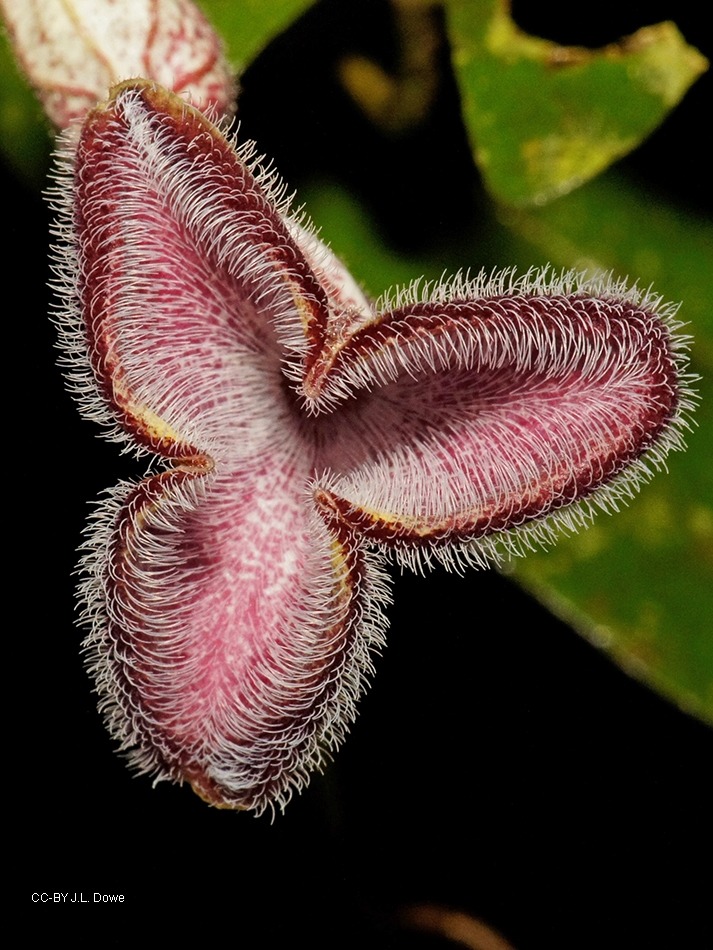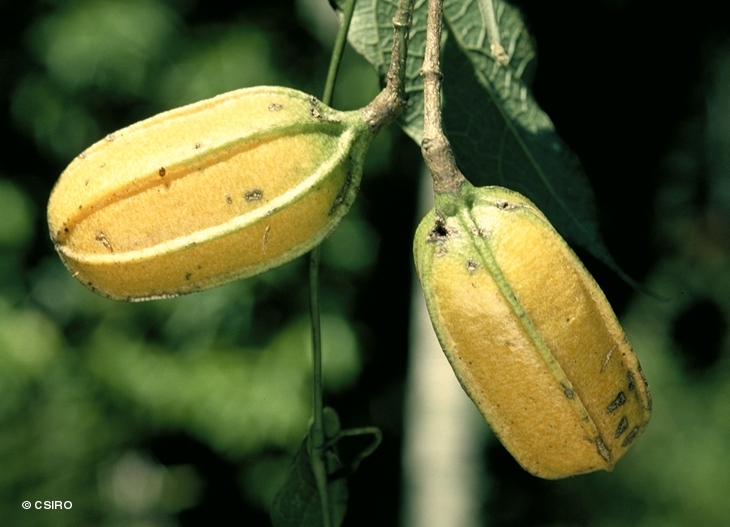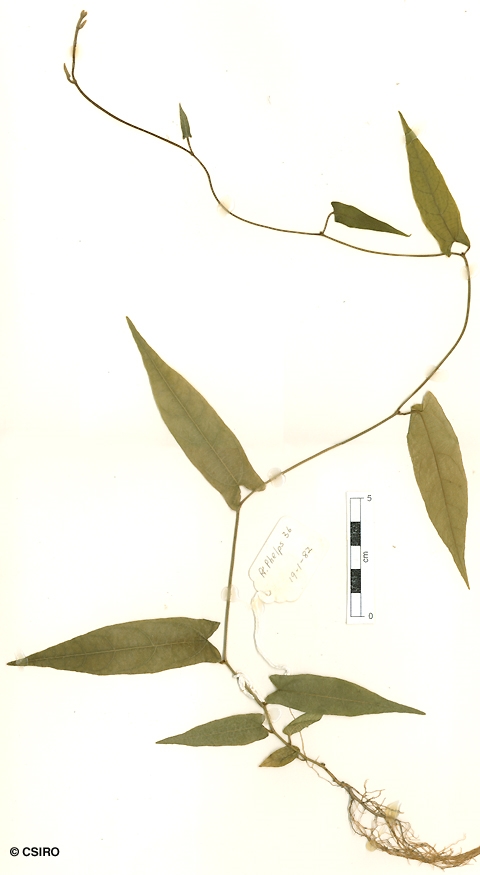Australian Tropical Rainforest Plants - Online edition
Aristolochia deltantha F.Muell.







Mueller, F.J.H. von (1868), Fragmenta Phytographiae Australiae 6(46): 179. Type: Ad sinum litoralem Rockinghams Bay; Dallachy. Lecto: MEL 1553306. Fide Parsons (1996).
Aristolochia, Mountain; Native Dutchman' Pipe; Mountain Aristolochia
Vine stem diameters to 3 cm recorded. Blaze odour quite apparent but difficult to describe. Oak grain visible in transverse sections of the stem but the vascular rays don't radiate from a central point but rather from a line bisecting the stem transverse section.
Leaf blades adhere when the underside is pressed onto clothing. Leaf blades about 3-18.5 x 1.3-7.5 cm, petioles about 0.7-4.5 cm long, twisted +/- acting like tendrils. Leaf blades hairy on the underside and at least some of the hairs end in a hook. Glands ('oil dots') visible with a lens on the underside of the leaf blade. Basal lobes of the leaf blade frequently overlap one another.
Pedicel gradually tapering into the ovary (hypanthium). Perianth tube somewhat sinuous, about 35 mm long and about 25-30 mm diam. at the apex. Apex +/- 3-lobed or 3-pouched. Perianth +/- shaped like the amplifier or horn on an old fashioned gramophone. Perianth tube inflated at the base around the stamens. Outer surface of the perianth marked by purple veins. Stamens fused together to form a structure around the style. Anthers sessile. Ovary 6-ribbed and 6-locular. Ovules numerous in each locule.
Fruits about 5.5-6 x 3 cm, outer surface with 6 longitudinal ribs running the length of the fruit. Seeds numerous, each seed +/- triangular, about 5-7 x 4-6 mm. Endosperm oily. Embryo minute, about 0.5-0.7 mm long, cotyledons about as long as the radicle. Embryo basal, i.e. at the pointed end of the seed.
One cataphyll, sometimes, but not always, produced before the first true leaves. First leaves cordate or narrowly cordate, apex acute, base auriculate. Both the upper and lower leaf blade surfaces clothed in simple hairs. Midrib raised on the upper surface. At the tenth leaf stage: leaf blade elliptic, about 5.5-6 x 1.3 cm, apex acute, base conspicuously cordate or auriculate with obvious lobes, petiole about 1 cm long, densely clothed in hairs. Both the upper and lower leaf blade surfaces densely clothed in short hairs. Midrib and lateral veins raised on the upper surface. Stem twining. Stems clothed in mostly backward-pointing hairs. Taproot brown and slightly swollen. Seed germination time 96 to 228 days.
Food plant for the larval stages of the Cape York Birdwing and Richmond Birdwing Butterflies. Common & Waterhouse (1981).





